
If you’ve ever used an app that just didn’t feel right—the navigation was confusing, the content wasn’t laid out in an intuitive way, or there were overly animated buttons—you can bet usability testing is what went wrong.
The process involves watching people use the app and evaluating where they trip up and how they think about what they’re doing.
Surprisingly, many companies still don’t conduct any usability testing when developing an app. One of the reasons is that they simply don’t know where to find participants.
So, to help you get started, we’ve put together a list of eleven ways you can find users for your next remote usability test.
Stay tuned for tips and tricks of the trade!
Table of Contents
Through people you know
Choosing participants for remote app usability testing requires some sleuthing to find the right people.
That’s why in the initial phase of app development, when you’re still figuring out which features to include and how they work together, it can be convenient to ask people you know like friends, and family members to take part in your remote usability testing.
However, as Michael Margolis, UX research partner at Google Ventures states, those people should still be representative of your target audience.
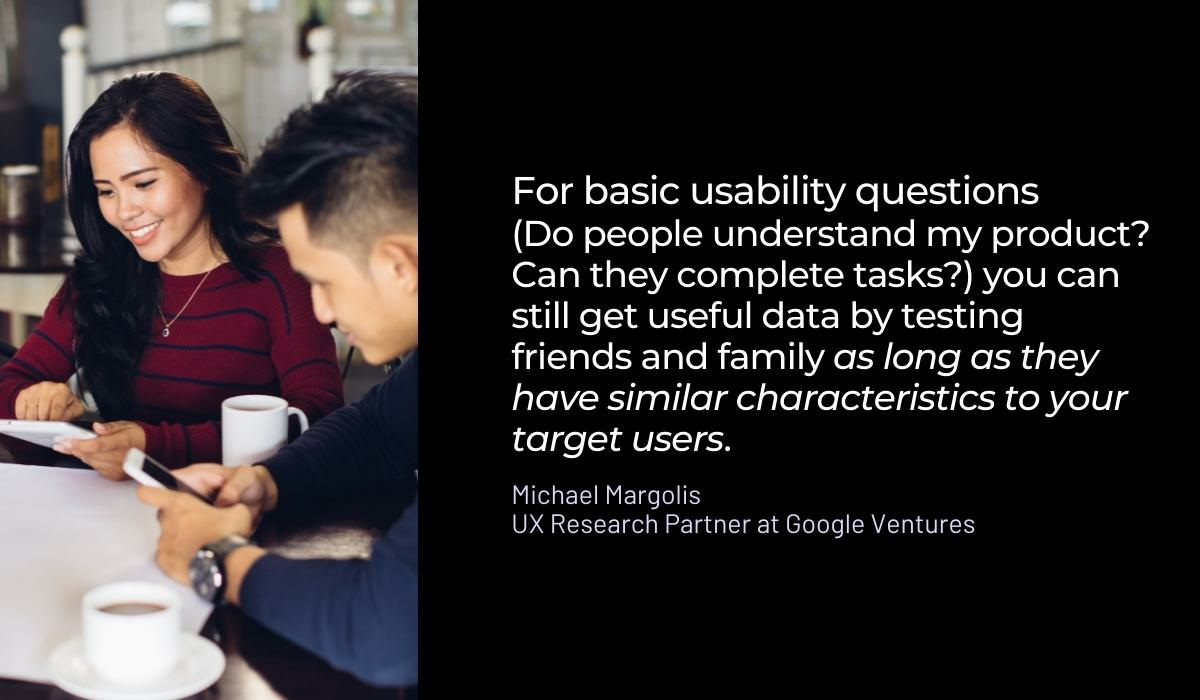
That means that if you’re building an app for busy parents, testing friends and family who have kids may be a good way to see how easily users get started with the app.
There is, however, a downside to this approach.

Get unreal data to fix real issues in your app & web.
Friends and family often have too much personal knowledge about the app or they want to help you succeed, which makes their feedback somewhat biased.
For that reason, using friends and family as the sole source of usability testing isn’t the way to go.
After this first round of testing, when you’re ready to get more participants, you may also want to include other users in your testing pool.
Using your customer-facing teams
Customer-facing teams, such as sales and customer support, can potentially be one of the most cost-effective places to find people for remote usability testing.
These teams interact with a large volume of users on a daily basis and can easily help you find the ones that fit your target audience.
For example, Dilan Üstek, a software engineer at MakerSights, strongly advocates using this approach because customer-facing teams already know users’ immediate concerns, as well as their skills and preferences.
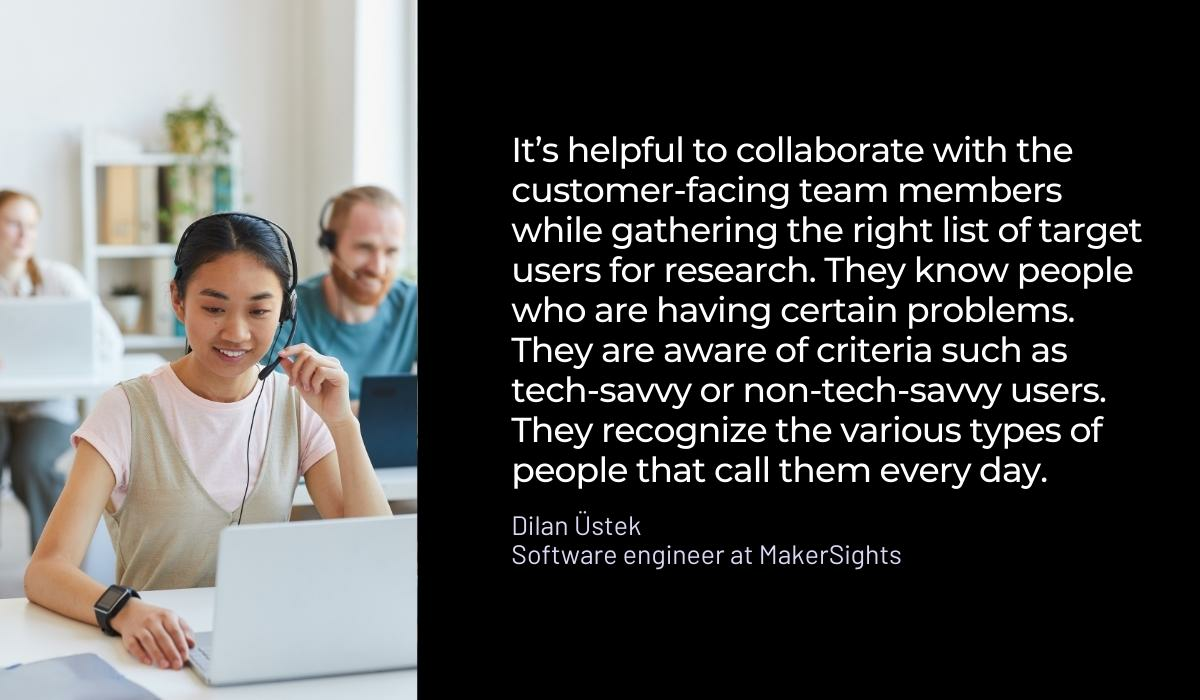
You can give these teams instructions on what types of users you need, including age, gender, occupation, location, and other demographic information.
In exchange, they’ll provide you with a list of users who would be good testing candidates and who have expressed interest in participating.
At this point, it has to be mentioned that this isn’t always the best option for finding usability testers.
For instance, if you’re trying to break into a new market or demographic, testing usability on users who are already familiar with the app, may not be the best idea.
However, this type of testing can be very effective when you want to test a new feature or a new app version that’s being released soon.
Asking your app users
If you already have an established app, you can use your relationship with its users to recruit people for usability testing.
For example, you can ask them to view a recent build or an updated design of one of your features and provide feedback on their experience using it.
What’s best is that you can do it without too much additional development effort on your part—you can just include a survey or link to the usability testing tool in the app.
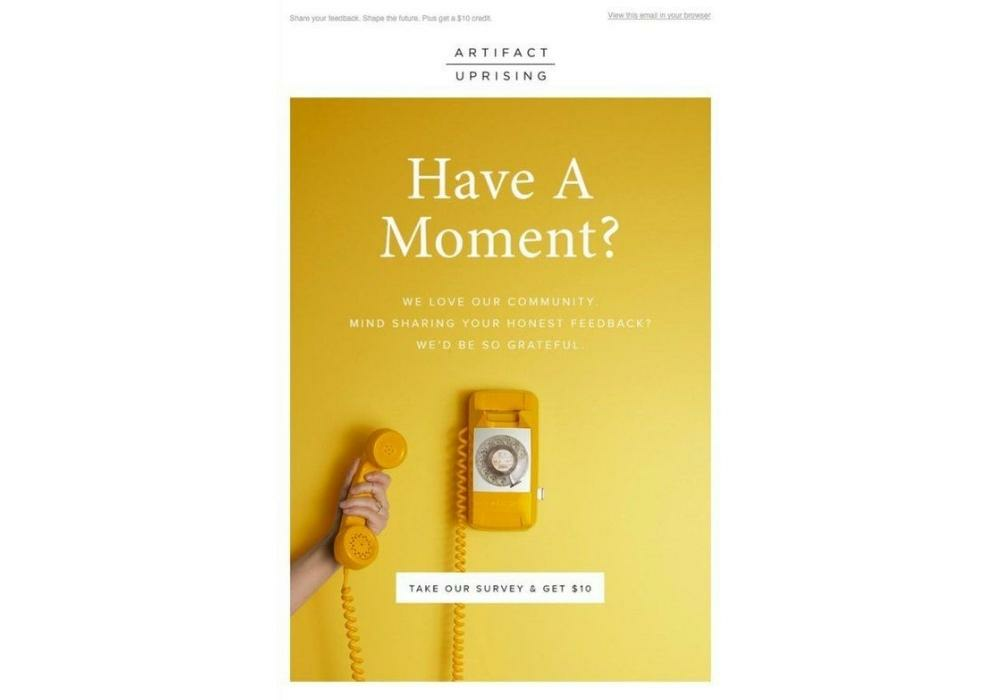
This is one of the easiest ways to recruit participants since you already have an established audience of users who are likely interested in the app and willing to provide feedback on it.
However, keep in mind that the longer the testing lasts, the fewer people will have the patience to complete it.
That’s why Natalia Bruzi, a product manager at SilkyCoders, strongly suggests that this type of remote testing takes no more than 5 minutes and includes up to 15 questions.
Otherwise, you may find that only a handful of users complete the test and you don’t have enough data to make any real conclusions.
By incentivizing referrals
Your existing users can be a goldmine for getting more participants.
In fact, one of the best strategies for getting newcomers is to get your current users and fans to spread the word about remote usability testing among their networks.
It’s a win-win situation for everyone involved.
Not only will you get new testers, you’ll also show your existing users how much their enthusiasm is appreciated by giving them an incentive in return.
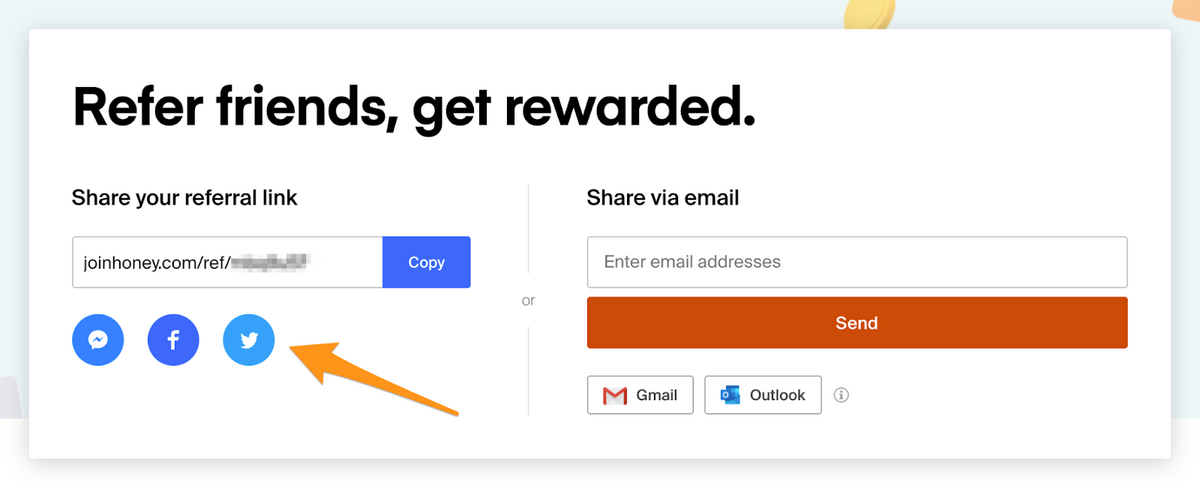
For example, if your app is paid monthly, you could offer a free month’s worth of subscription services in exchange for every referred user that successfully completes a usability testing session.
Offering vouchers and discounts can also be an excellent way to reward your app users, as well as giving access to premium features.
There is no limit to how you will incentivize and encourage app users to participate in referrals—you are free to tailor this as much or as little as your circumstances allow.
Either way, it’s advisable to leverage this opportunity, especially as research shows that almost 30% of people are motivated to refer their friend in exchange for a reward.
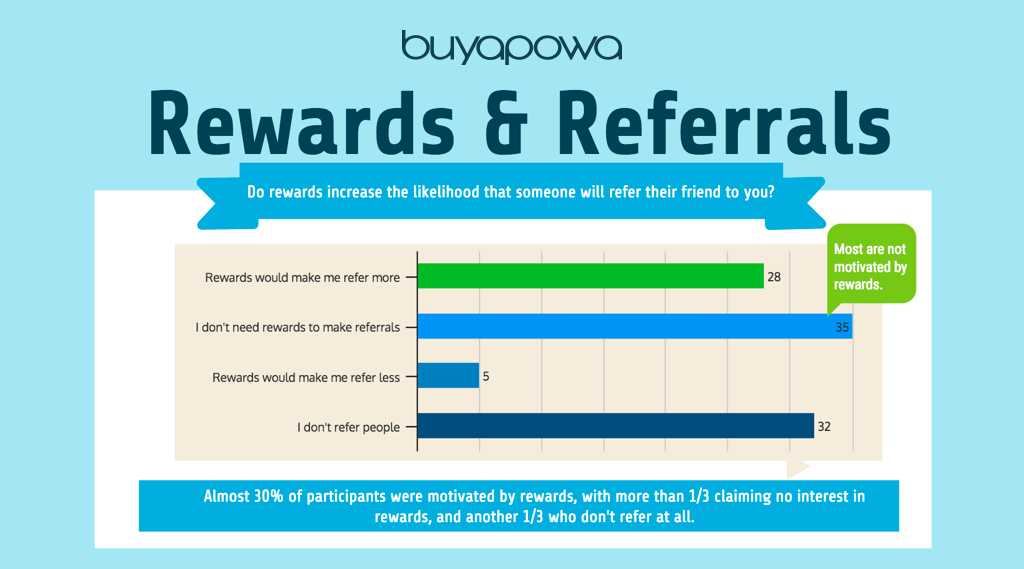
However, this approach still has a few setbacks.
First, it’s not always a sustainable way to incentivize your testers as you will eventually run out of vouchers or discounts and need to come up with another type of incentive.
Second, you have no control over who your users refer to.
They could invite people who aren’t qualified for usability testing or don’t match your target audience enough to provide useful feedback.
Still, word of mouth can be a potent tool for expanding your participants’ base and increasing your test volume.
Through your own website
The company’s website can be a great place to look for usability testers, because that’s where users who fit the target audience are likely to be found.
This is especially true if you make it easy for visitors to sign up for testing with minimal effort on their part.
For example, you could place the call to action button on the homepage or in a prominent place on every page of the website, similar to the one below.
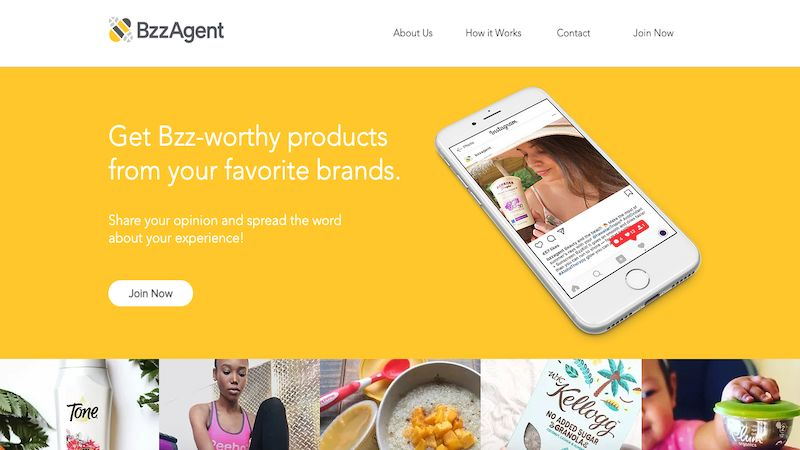
You could also include a pop-up or banner ad that prompts users to sign up when they visit certain pages on the website.
If you want to be more targeted about your testing, consider also having a landing page on the website that explains the benefits of testing and prompts visitors to sign up.
Alternatively, if the company has many email subscribers gathered through its website, you can also use those emails to encourage participation.
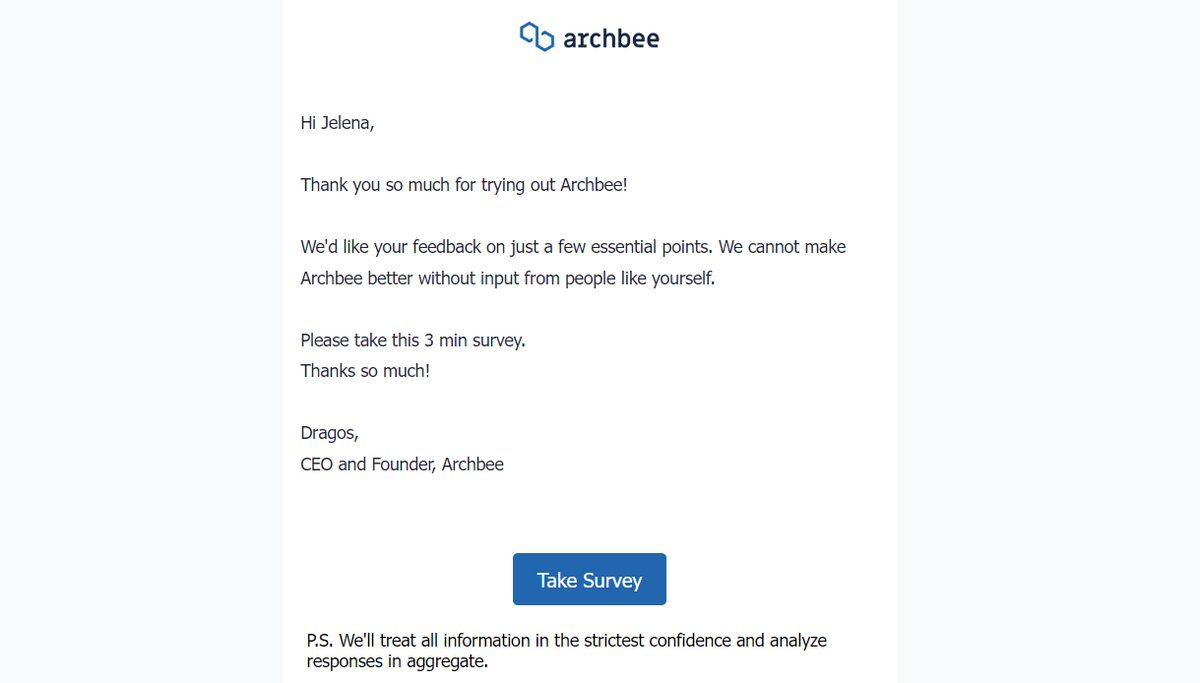
When you implement all of the suggestions above, the website will provide you with a pretty solid foundation for recruiting participants at a low cost.
Since website visitors are already interested in the app, most likely you’ll have no trouble finding good testers.
On online forums
There are a lot of people out there who love to share their opinions.
They spend hours every day on online forums, such as Quora, Reddit, or Stack Overflow, discussing the things they’re passionate about.
These sites can be a treasure trove for finding potential participants for usability testing.
For example, if you’re building an app for cat lovers, you can go straight to that subreddit and ask if anyone would be interested in testing your feline app.
Or if you’re trying to get testers for something more specific such as a smart plug app, as shown in the picture below, online forums can still provide you with a pool of interested users.
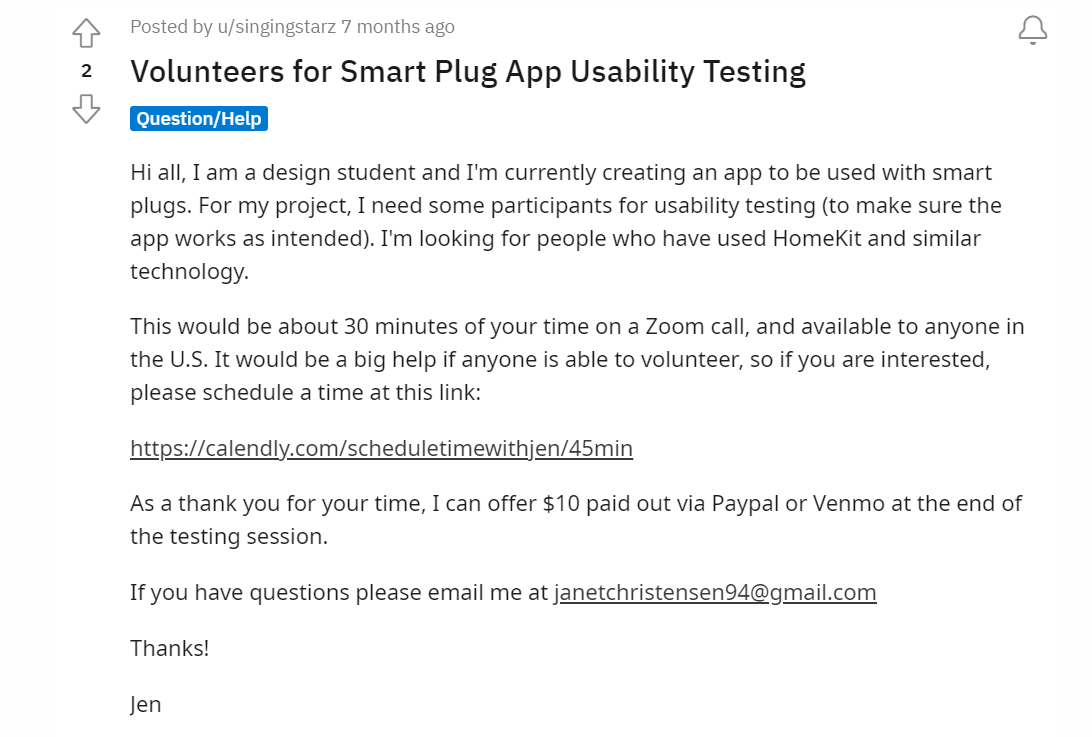
This approach not only saves you time and money, but it also represents an authentic way of getting feedback.
People who visit online forums are already engaged in particular topics, so they’ll be more motivated than someone who is getting paid to go through the usability test.
However, this approach can also be a double-edged sword, as Therese Fessenden, a senior UX Specialist at Nielsen Norman Group, states in the YouTube video below.
She claims that such an approach can lead to unwanted bias as forum members can be very vocal and sometimes sway popular opinions in the topic groups.
In that case, sourcing subjects from multiple forums can help to avoid this problem.
On social media
Because of the prevalence of social media, you and your team have more opportunities than ever before to reach your target audiences and recruit them for usability testing.
Social media platforms such as TikTok, Twitter, Facebook, LinkedIn, and Instagram allow you to easily engage with users and invite them to participate.
And by posting on multiple platforms at once you’ll be able to reach an even wider audience of potential test participants.
As shown in the example below, all you have to do is create a post and then share it with your followers on social media.
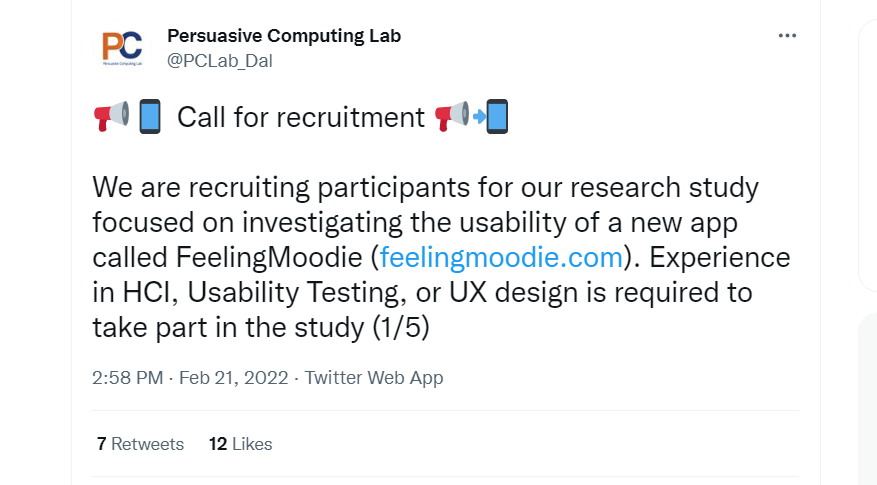
As they’re already your followers, meaning they see value in what you have to offer, chances are that many of them will respond to your request and participate in the testing.
While you’re already on social media, you can also leverage the fact that Facebook has a wide array of groups for almost any topic under the sun.
These are excellent spots to find people who would be willing to participate—they already care about whatever topic the group is centered around.
For example, Uri Ar, an experience and brand strategist at Aleph, explained in his blog post how they used posts in the Facebook group for expats living in Tel Aviv to recruit relevant usability testing participants.
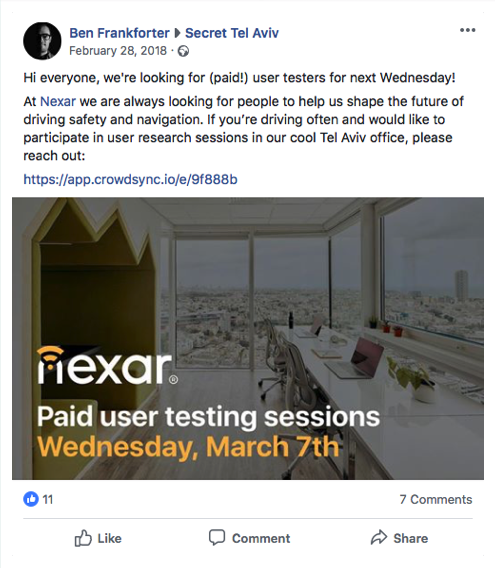
This enabled them to find testers from a very specific group of people which they would otherwise have trouble reaching.
In conclusion, social media offers a broad range of opportunities for spreading the word about your usability testing project—so it’s worth taking advantage of all these resources.
Through online advertising
Although we discussed the convenience of finding participants on social media in the previous section, it can sometimes be a challenge to get a wide reach on social media without paid ads.
Therefore, in order to increase the number of people you reach, it would be wise to simultaneously post about your usability testing while also scheduling ads.
The example below shows how such an ad might look for a Facebook campaign.
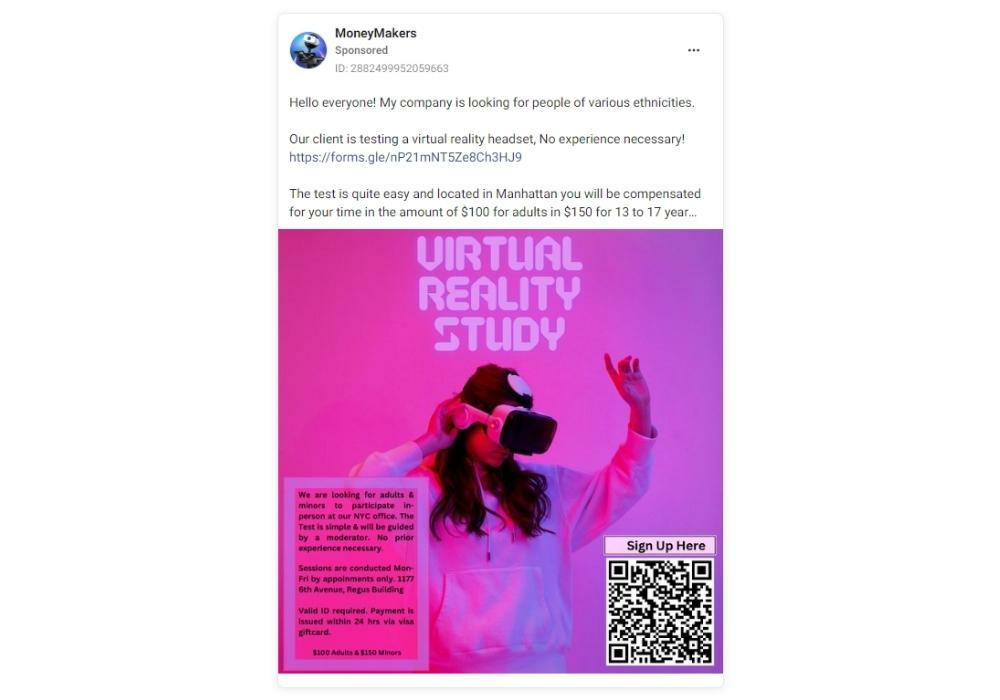
For instance, Jose Angelo, a head of Content and SEO at Respondent, occasionally uses Facebook ads to recruit users for his usability testing projects.
He suggests that the main benefit of this approach is its relative cheapness.

However, there are other channels for online advertising that may be just as effective or even more successful than Facebook.
For example, you can use Google Ads to promote your usability testing initiatives on the search engine giant’s platform and attract even more users.
LinkedIn’s advertising platform can also be a great resource as it allows you to target the audience based on factors like job title and industry—a good option if you’re looking for participants who fit a specific profile.
Overall, online advertising can be an effective way to grow your usability testing pool and it’s worth considering as a fruitful option.
Using online services
If you want quick access to people who can test your app, without having to go through the hassle of recruiting them yourself, using online services can be a convenient option.
There are a number of online platforms that specialize in recruiting usability testers, such as Upwork, Craigslist, Usertesting, and Mechanical Turk, to name just a few.
These services let you post a description of your app, give information about the testing process, and then they provide access to people who fit the demographic criteria you need to test your app.
Usertesting, for example, offers a large base of remote testers you can choose from, who can complete the testing via video and audio channels.
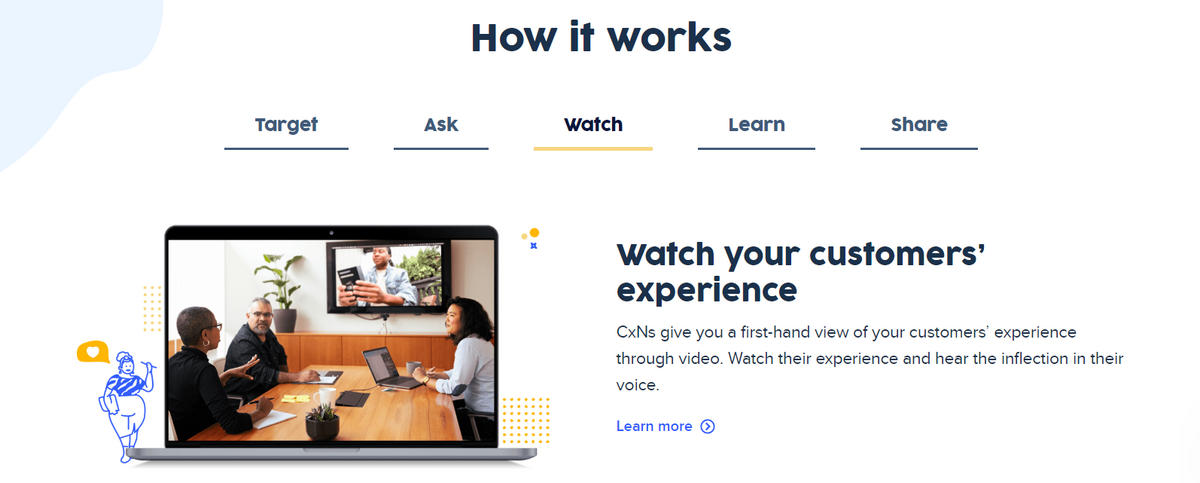
Upwork is one of the most popular freelancing platforms for scouting usability testing participants.
As the picture below shows, you list a job posting, and then you can choose from a wide variety of freelancers who are ready and willing to do the work.
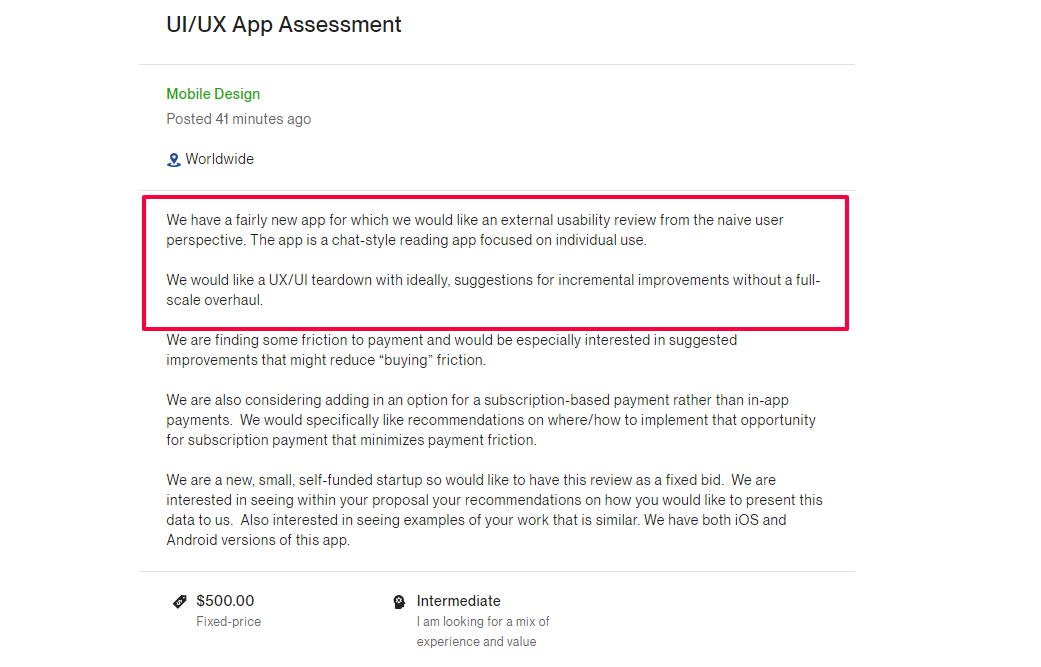
You can also search for freelancers based on their skills, location, experience level, workload availability, and many other factors, and contact them directly, asking them to participate.
As you can see, online services can be a great way to find the people you need for your testing.
If you are looking for an easy way to get the job done, this is a safe bet.
Hiring panel recruitment agencies
If you don’t have the staff to conduct remote testing yourself, or if you’re in a hurry to test the app, then there’s no better way than to hire a professional panel agency such as UXTweak, UsabilityHub, and Userlytics.
One of the best things about working with such agencies is that you can get access to hundreds of thousands (in some cases even millions) of participants in different locations, who fit different demographics.
And when it comes to usability testing, those things can make all the difference.
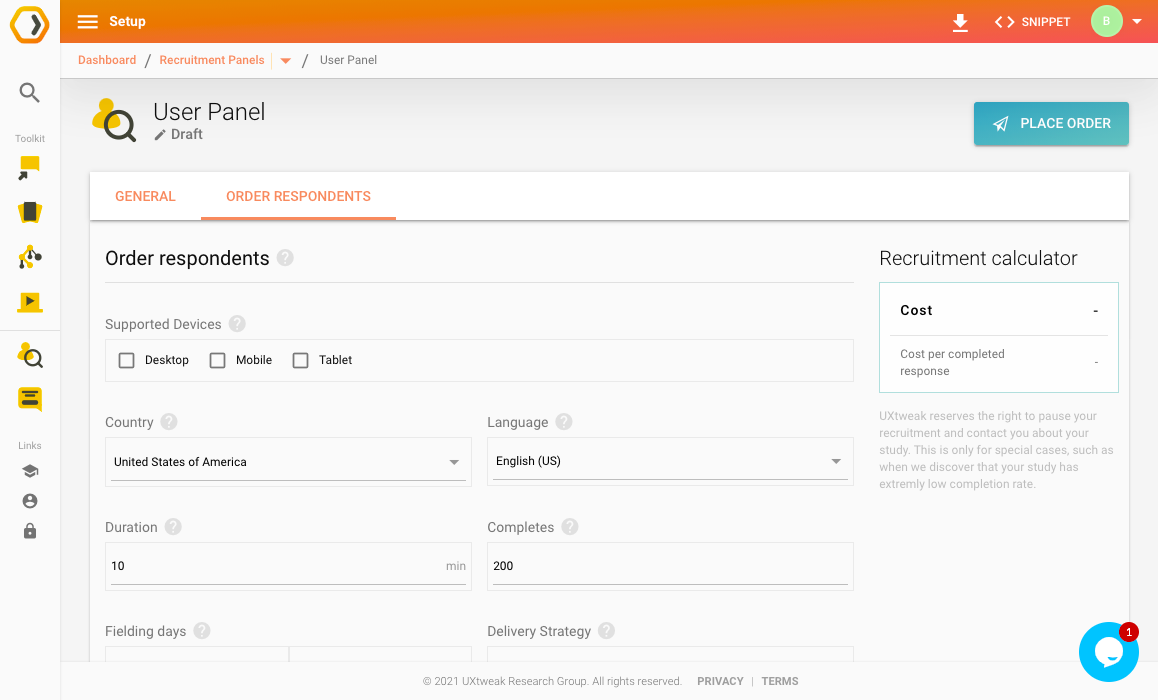
At first glance, panel recruitment agencies might seem like a better alternative to other methods of finding research participants.
For example, they can be a reasonably cost-effective way to recruit participants from a demographically similar sample.
They also provide accurate details on the participants’ demographics, which include gender, age, and educational background.
Panel recruitment agencies do have some disadvantages, however.
For example, their databases are not as diverse as they could be because they tend to be more white-collar than blue-collar, with fewer people with lower income levels and less formal education.
Nonetheless, they provide a huge benefit by taking away the hard work of recruitment from you and your development team—something that can be both time-consuming and difficult to do.
Using research recruitment agencies
Hiring a research recruitment agency is by far the most expensive method of recruiting, but often produces better results than any other.
What makes their services so impressive is that these kinds of agencies take over the entire recruitment process—finding participants who fit your target audience, screening them for eligibility, ensuring they have the right equipment before testing begins, and securing their participation in usability testing—all without you having to lift a finger.
For example, TestingTime and Probe Market Research specialize in the kind of qualitative usability testing methodologies that we’re discussing here.
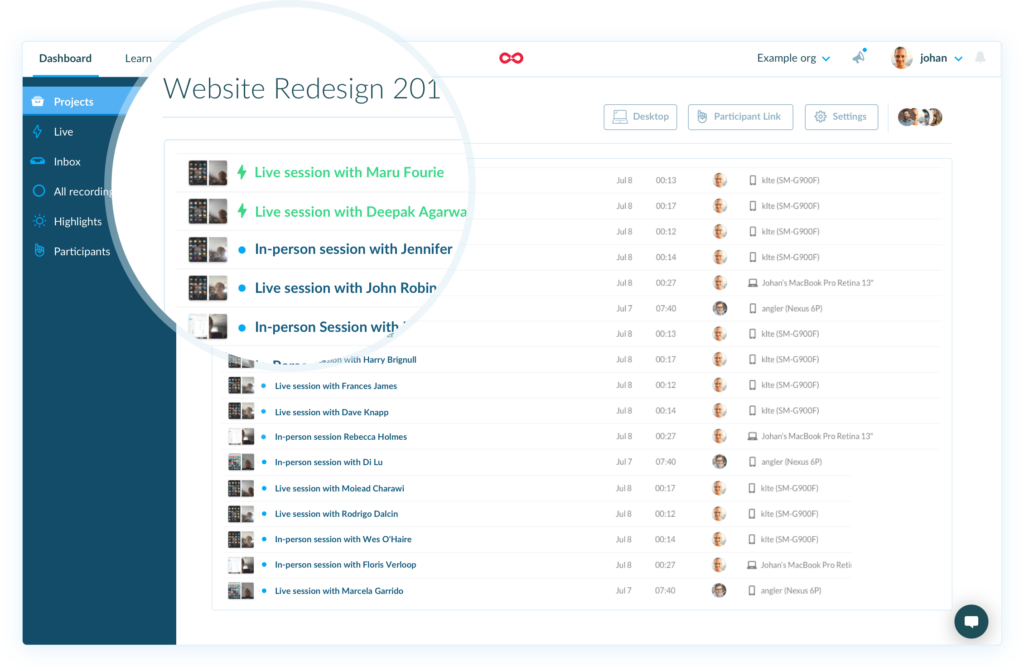
However, due to their high cost, it’s usually only worth using research recruitment agencies when you have a very specific type of participant in mind.
For instance, if you want to test your new app on very specific target groups such as medical doctors, surgeons, lawyers, or astrophysicists who are difficult to reach by other means, then this is a great option to consider.
If you’re just looking for general feedback from people who fit your target audience, it’s probably best to stick with an online panel or any other previously mentioned methods.
Conclusion
We know how daunting the process of recruiting can be, so we hope this article will give you some direction about where to find the right remote usability testers.
Don’t forget, testing can be done at almost any stage of the development process and you don’t have to wait until you have a shiny, high-fidelity app.
You can perform different types of usability tests at various stages, and for each test you may recruit a different type of tester.
So feel free to try out different methods from our list, and see what works best for your project.





